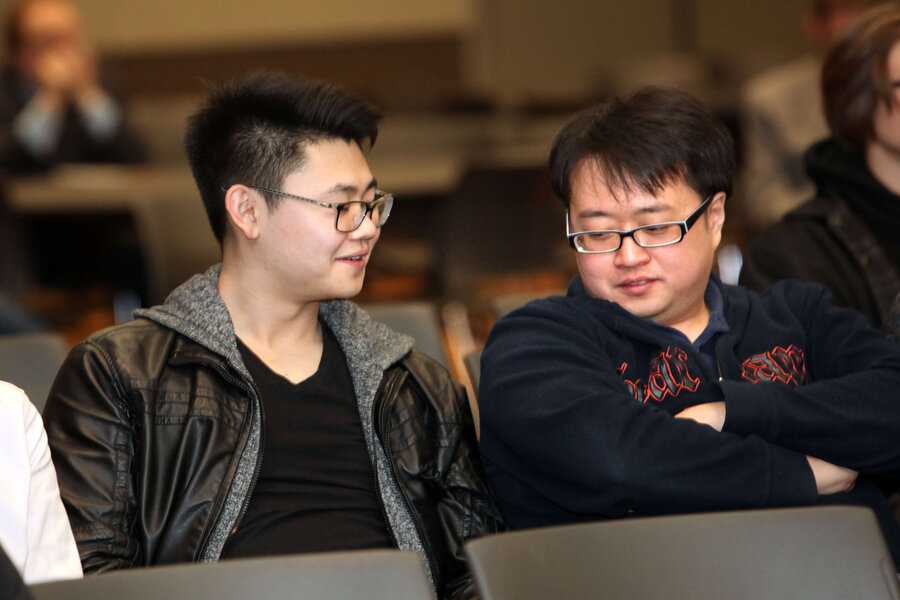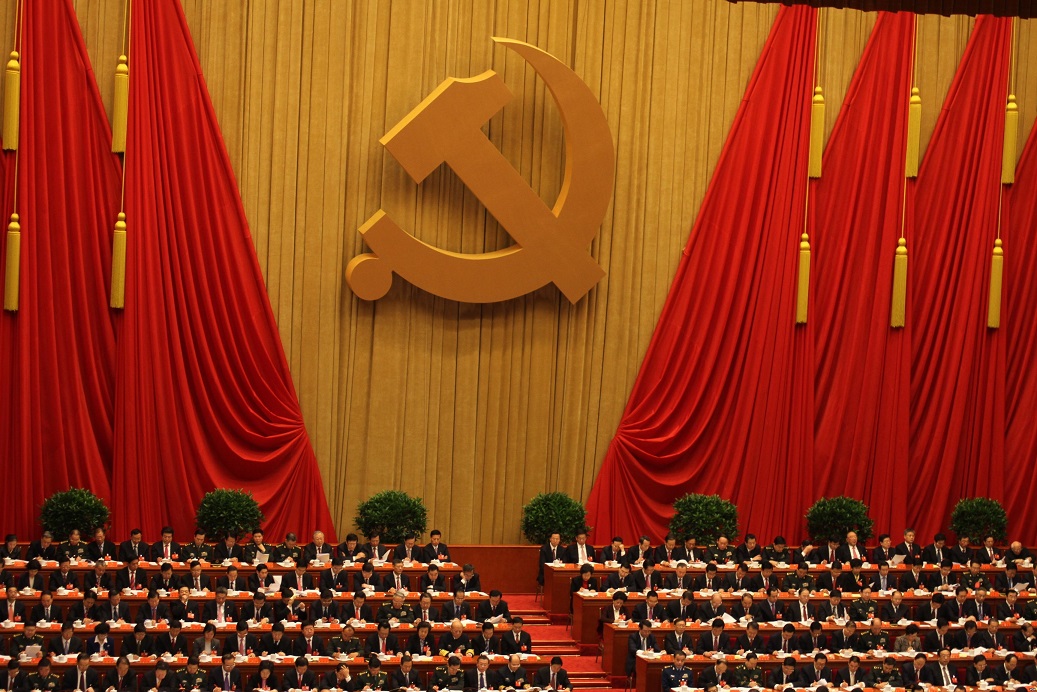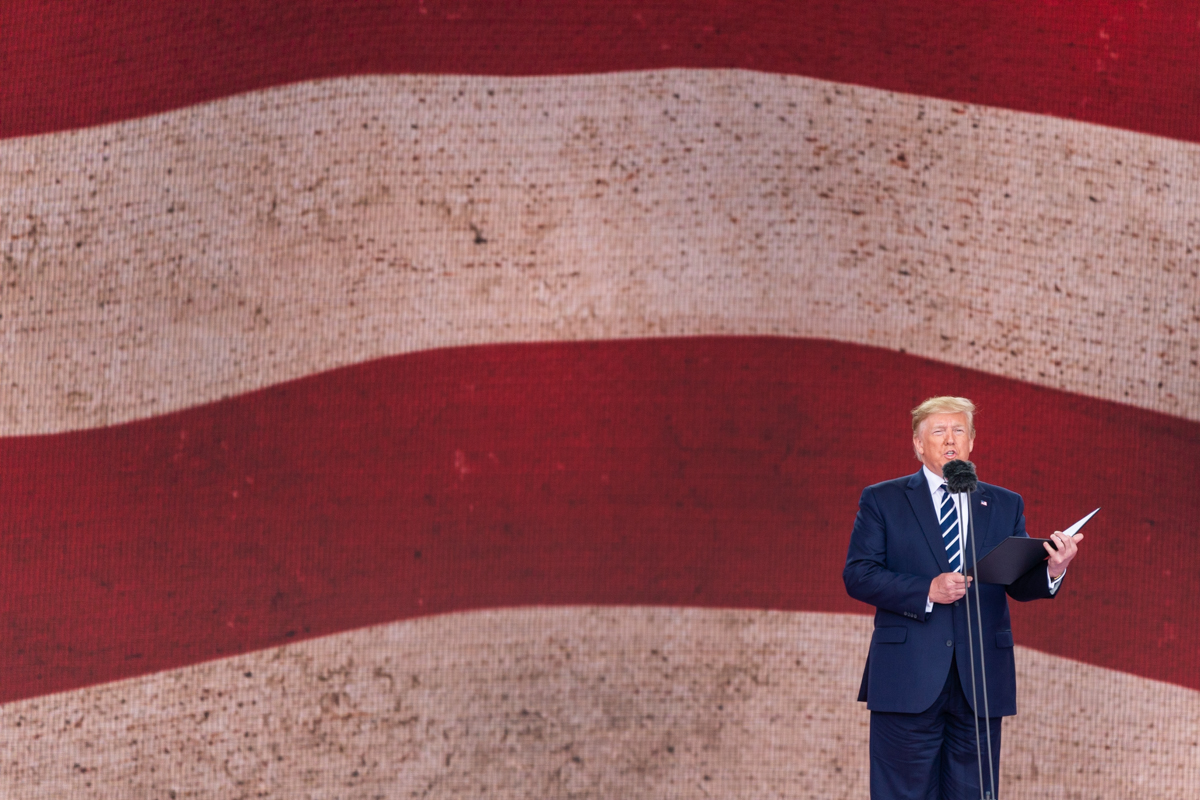How to Revamp Chinese Students’ American Education

Published by The Lawfare Institute
in Cooperation With

Matriculation season has arrived, and it may mark the 15th consecutive academic year that Chinese students make up the largest share of America’s foreign university students. While surveys won’t immediately provide confirmation of total numbers, one thing is certain: China will remain a vital source of university students for years to come. There appears no end in sight for policymakers and educators concerned about how to approach the influx of students arriving from the United States’s chief adversary.
The topic is fraught for good reason: Chinese students in America present a historic opportunity for the United States, but American universities are still failing to educate Chinese students in a manner consistent with American values and interests—and hemorrhaging indispensable skills to the Chinese Communist Party (CCP) in the process.
America’s universities can do better. After years of facing polarizing public debates and government investigations into Chinese ties to American higher education, a defensive approach to educating Chinese students is understandable. But colleges should instead be proactive in promoting to them the value of liberal society and free inquiry through education. To do so, they should empower the United States’s sizable pro-democracy Chinese diaspora to offer freely available online courses on the topic that has been most aggressively censored in the People’s Republic of China (PRC): China’s own modern history, including Chinese democracy movements. By incentivizing, but not requiring, such courses for admissions or academic credit, American universities could help undermine the anti-liberal attitudes that Beijing has worked to instill in China’s future elites studying abroad.
Historic Scale, Flagging Results
When the USSR and the United States first began their student exchanges in 1958, President Eisenhower hoped to invite up to 10,000 Soviets to study in America—all expenses paid. Moscow carefully considered Washington’s final, ambitious proposal and summarily agreed to send a grand total of 20. Communist leadership’s continued reluctance to send Soviet students abroad and American leaders’ eagerness to receive them reflected a belief shared between the two powers—namely, that American higher education could be a powerful agent of liberalization. Their intuitions were proved correct: Though few in number, some of the Soviet students who studied in the United States eventually played a pivotal role in the liberalization and dissolution of the USSR.
In light of that history, student exchanges between the United States and today’s communist superpower appear to have been turned upside down. In the 21st century, Beijing embarked on an industrial approach to mass foreign education that represents one of globalization’s largest educational experiments and a tremendous gamble by an autocratic government—maintaining a minimum of a quarter million students in the United States every year for the past decade. Facing the historic scale of China’s education gambit, it is now leaders in the American government who are seeking to restrict Chinese students’ access to American universities, to the dismay of many young Chinese.
The animating concerns behind these restrictions are legitimate: Beijing has successfully exploited the openness of American universities to turbocharge the rise of its authoritarian state, including the modernization of its military. But how has that boon in expertise for the PRC compared with the intended liberalizing impacts of American universities?
It’s hard to say, in part because such liberalizing effects are often delayed. Taiwan’s chief democratic reformer, Lee Teng-hui, recounted how his transformative experience at Cornell inspired him to return home “determined to make my contribution toward achieving full democracy for our society,” even if it took many years for him to reach a position in which he could affect substantial change. Many students, professors, and administrators today maintain friendships with Chinese students whose appreciation for democratic freedoms has grown from their time here, whose impact may not yet be visible.
But a series of public incidents in recent years in which Chinese students in the United States demonstrated dogmatic allegiance to the CCP have suggested another possibility: that American education is not having its intended effect on much of its largest foreign constituent. This dynamic was most evident when Beijing’s autocratic rule directly collided with Hong Kong’s democracy in 2019, and large, aggressive, and sometimes violent protests by Chinese foreign students in favor of their home dictatorship erupted across open societies.
The data on these trends is scant but not promising. The largest recent survey of Chinese students from Purdue University in 2018 found that more than 40 percent of Chinese students surveyed on American campuses said their perception of America had become “worse” or “much worse” during their studies, and only 16 percent said their opinion of the United States had improved. Almost half indicated gaining a more positive view of their home country, compared to only an eighth that had worse perceptions. And as the foreign-educated proportion of the CCP’s top ranks has swelled in recent years—representing one in five Central Committee members and an unprecedented one in three Politburo members—China has become more autocratic, not less.
Inoculated Against Liberalism
Some of the sources of American higher education’s seemingly counterproductive effects for many Chinese students are obvious. Criticizing the United States’s history and role in the world is a major focus for many professors and students in contemporary American academic culture, as demonstrated in recent campus protests about the U.S. government’s role in the ongoing Gaza war. And while only possible because of the United States’s firm commitment to free speech, this outsized attention on America’s faults can still have adverse effects, especially on a population that has been exposed to only a triumphalist history of their own government. Likewise, to many Chinese students, ideologically charged diversity, equity, and inclusion trainings that are now mandatory in two-thirds of American universities remind them of party indoctrination classes, which, together with the cancel culture dynamics prevalent on many campuses, can diminish the sense that free speech in American higher education is much different from the system they left behind.
But the most significant aspects of the challenge can be difficult for Americans to fully appreciate. The PRC today operates the largest and most sophisticated propaganda apparatus in human history. Beijing spends billions of dollars a year on internet censorship alone—developing ever more advanced “public opinion management” software tools and marshaling a constant barrage of meddling from armies of paid internet censors similar in size to the country’s active military forces. Under General Secretary Xi Jinping’s leadership, such censorship has greatly intensified, as the state frenetically rewrites its own official history, scrubs what traces remained of the party’s most egregious atrocities, and consolidates Xi’s official “correct outlook on history.” Convinced that controlling narratives and beliefs is central to his legitimacy, in 2021 Xi’s government established a hotline for citizens to report “historical nihilists”—individuals who deviate from the Party’s official history—to the government for retribution.
Young Chinese may not always buy the party line, but after 18 years steeped in propaganda—and dogged by the fear of getting its vagaries wrong—they often arrive on American campuses with strong, subconscious intuitions that are difficult to overcome: a feeling that Chinese patriotism is inseparable from party loyalty, a deep aversion to open political discussions, and a hyper awareness of democracies’ flaws. Young Chinese are also so habituated to Beijing’s meticulously curated information ecosystem that they typically don’t even try to venture beyond it, even when given free access to the open web. And studies have demonstrated that the CCP has been so successful in inculcating skepticism of American media among Chinese citizens that they are more likely to reject critical reportage about China out of hand if it comes from the United States.
This propaganda zeitgeist is further reinforced with an impressive range of intimidation and censorship techniques that the CCP uses to influence its citizens who are studying in the United States. Many of these efforts are subtle, such as encouraging continued dependence on censored apps and party-controlled Chinese-language media, or funding Chinese student groups with government ties. Others are more aggressive: making scholarships for students contingent on political compliance, using fellow Chinese classmates to inform on one another, punishing students’ families in China for their unapproved activities abroad, and even jailing returning students for stepping out of line while studying in America.
The breadth and intensity of the party’s efforts to curtail the liberalizing effects of Western education among its citizens is predictable. Securing the “educated acquiescence” of China’s scholarly class is a centuries-old focus of traditional Chinese statecraft that has received serious attention from China’s leadership since the country’s 1989 student-led democracy movement was silenced by the Tiananmen Square massacre. Given the immense benefits—and risks—that American education could confer to the CCP’s regime, Beijing has been far more deliberate than the United States in pursuing its goals in the Sino-American educational experiment. And its efforts have paid off, producing a generation of Chinese students whose resistance to liberalizing influences far outstrips anything American colleges have encountered before.
Rebalancing
There is no quick fix to solve these issues, but there is an obvious place to start—exposing Beijing’s lies for what they are. To cut through the years of propaganda that Chinese students have been subjected to, China’s pro-democracy diaspora should lead the charge in developing freely available online courses on the history of the CCP’s authoritarian regime.
Purpose-built classes taught in Mandarin for mainland Chinese students, developed in collaboration with respected scholars, could go a long way in dismantling the false narratives that the CCP uses to sustain its brutal rule—promoting greater receptivity to the benefits of liberal societies. Such classes would amplify the heroic voices and histories of Chinese who have fought for freedom that the CCP has so violently repressed, such as the stories of the students who led the 1989 Tiananmen protests and Nobel Prize laureate Liu Xiaobo’s efforts for political reform. They could also include practical information, such as how to see through the Propaganda Department’s efforts to curate contemporary Chinese public opinion, and how dissenters from the party line can safely endure within their society.
No one is better suited to developing such classes than pro-democracy Chinese themselves, who have borne the costs of standing up to their homeland’s regime. They also have a much greater cultural awareness of the sensitivities involved in political discussions with Chinese youth, who very often leave political engagements with foreigners feeling alienated and attacked.
Universities need not require any one course themselves—they need only reflect in their admissions decisions that successful completion of any such voluntary classes could make Chinese applicants more competitive. And it surely would: Taking the initiative to rebalance one’s education from a totalitarian state would undeniably demonstrate the bravery, leadership, and critical thinking that American colleges prize in their students. For those unable to take the classes ahead of time, universities could consider offering credit for their successful completion during students’ studies in the United States.
As anyone who has spent time in the PRC knows, in contemporary Chinese society there are few forces as strong as the drive to get into a good university. Aspiring university students and their families will go to almost any length to improve their chances, and even the rumor of a quick, discreet way to gain a significant edge in college admissions would shoot through China. Formidable as the Great Firewall is, analyses show that when prompted with a good reason to defy it, many Chinese find ways to do so.
With online learning platforms like Coursera surging globally, the infrastructure is already strong to support digital avenues to an alternative education for Chinese students. Indeed, a recent initiative has provided some proof of concept for this approach: Chinese human rights activist Teng Biao has partnered with Columbia University professor Andrew Nathan to offer a Mandarin-language online seminar on censored topics in Chinese politics. There are a range of cryptographic solutions to help make similar classes scalable, feasible, and reasonably safe for China’s youth, who may rightly fear government retribution for learning their own country’s past—especially as the regime takes a more aggressive approach to editing and policing the country’s official history.
To be sure, academics may understandably balk at the suggestion of building and incentivizing classes for one particular foreign nationality, even if they are voluntary and led by their own compatriots. The prospect of doing so appears to grate against the ideals of openness, inclusivity, and diversity that are hallmarks of universities and democracies both. And there are other countries with repressive political environments—why single out Chinese students?
These concerns miss the forest for the trees. Many universities across the United States have already been forced to take special measures to cope with the CCP’s pressures on Chinese students—measures that many liberally minded Chinese students still feel are largely insufficient to address the threat to free expression posed by the long arm of the CCP. They are right. At present, most policies for Chinese students work only to try to protect the small handful of individuals who take the initiative to overcome the considerable disincentives to engaging in sensitive coursework or political activities. Making classes available, discreet, and incentivized would go a long way to better balancing risks and opportunities, functionally opening forbidden topics to a far more diverse range of Chinese students than would otherwise consider such exploration. It would also offer much-needed top-cover for curious students who can claim, if probed by family, informants, or Chinese government officials, that they took the classes only to improve their chances at admissions or to help with their credit load—a major improvement to the status quo, in which electing to take coursework in sensitive topics is inherently incriminating. In short, more pointed actions, such as uncensored history classes, are sorely needed.
Admittedly, students studying in America from other repressive countries may also benefit from tailored classes to better contextualize the propaganda they have been subjected to—but none as much as China, which Freedom House ranks as having singularly the least free internet of any of the 70 countries it tracks for that metric. Indeed, the cumulative total of students studying in America from all other countries ranked as having “not free” internets by Freedom House amounts to less than half of the number of students from China alone. Given that China’s propaganda ecosystem is increasingly the backbone of other countries’ censorship apparatuses, targeting the source of the world’s propaganda capabilities is the most sensible place to start.
If universities seek to defend freedom of thought and expression on their campuses, they would do well to support these efforts, offering collaboration and support with teaching expertise, academic rigor, and accreditation where appropriate, in addition to intimating that successful completion of such courses would boost applicants’ chances. At a time when public trust in universities is plummeting, more proactively championing liberal democratic values and the voices of suppressed Chinese should be a win-win for American colleges. Organizations like the National Endowment for Democracy, the Open Technology Fund, and Google’s Jigsaw should also offer resources to help develop the technical solutions necessary to make such classes feasible, verifiable, and safe within and beyond the Great Firewall.
Despite legitimate concerns about the CCP’s exploitation of American education, the continued flow of young Chinese elites through American higher education still represents a historic opportunity. But to ensure that the CCP is not the primary beneficiary of that opportunity, the United States’s universities need to find effective ways to overcome the effects of Beijing’s propaganda state. There may be no more American method to do so than empowering China’s suppressed democratic voices to freely tell their own stories to their compatriots.

.jpg?sfvrsn=8efcefb8_3)




